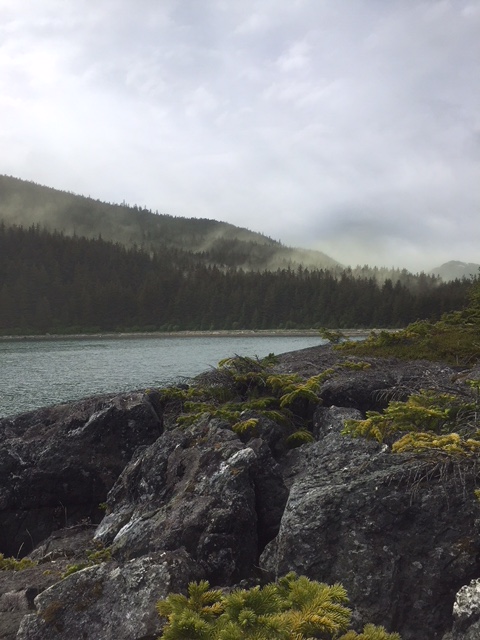
Springtime in Alaska is a beautiful sight. With each passing day, the sun shines longer, wildflowers bloom in vibrant colors and wild animals stretch their legs after a cold winter.
For those who suffer from seasonal allergies, spring means red eyes, mucus and fits of sneezing. And this year, Southeast Alaska has seen a remarkable tree pollen bloom — just looking at the blooms is enough to make one sneeze.
But as menacing as they may look, the large plumes of yellow may not be a source of seasonal allergy symptoms.
“Red eyes, runny eyes, swelling eyes. When it’s really bad my eyes start to swell up and then the sneeze tickle — it’s like a hedgehog is in your nose. It’s amazing,” said Amanda Randles, a Haines resident who suffers from springtime allergies.
It has been a few years since Randles has seen pollen blooms of this size. The first time was a shock for her.
“I kind of definitely had a moment of, ‘Is this some sort of chemical warfare thing?’” Randles said.
Most of that pollen comes from spruce trees. Spruce pollen grains are larger than pollen grains from other types of trees, such as birch. The larger pollen gets trapped by the hairs and mucous membrane in the nose before it can penetrate deeper into the respiratory tract and cause an allergic reaction.
Dr. Jeffrey Demain, founder of the Allergy, Asthma and Immunology Center of Alaska said that spruce pollen can be an irritant in the same way that road dust is, but deciduous trees, grasses, weeds and molds are the culprits for outdoor allergies.
One way to plan ahead for allergies is to check recent pollen counts. Demain uses a special machine to measure pollen at his clinic in Anchorage.
“So you want to first identify the pollens you are looking at, and then you literally count them,” Demain said. “There’s a mathematical formula that you use to determine how many pollen grains there are per cubic meter. So for every count that we do, I would say that’s about six hours of total preparation.”
In Anchorage, there are high levels of birch pollen at the moment. Demain said that’s normal for the time of year. What sticks out to him is that the pollen cycles are beginning earlier and earlier each year.
“We’re as much as a month earlier than we were a decade or two ago. That’s related to the warming of our temperatures,” Demain said. “Our temperatures are warming two-to-four times what is seen in the global average when you’re looking at the subarctic region.”
Demain said that unfortunately there is little pollen data for Southeast Alaska because it lacks pollen count stations. The equipment for the devices is expensive, and collecting the data is a labor-intensive process that requires special training.
Judging by the yellow dust covering the roads, floating in the water and swirling in the half-light, odds are the pollen count is high.
